John Lethlean: my favourite places to eat around the world
Istanbul, Rome, San Sebastian, Barcelona, Morocco, Bangkok... here’s my pick of the world’s top food destinations.
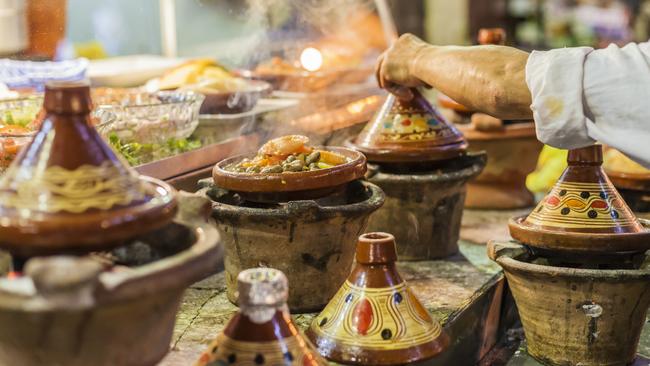
Focaccia in Rome. Lahmacun in Istanbul. The hottest pork stir-fry in Bangkok… what better way to peel away the layers of a new place than via the food haunts locals love? We’re all flicking through happy snaps and dreaming of those special places that have ignited our passion for a new country via food. Here are a few of my favourites.
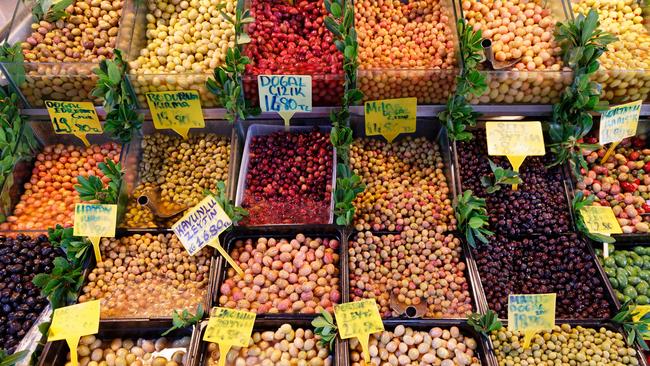
Kadıköy district, Istanbul
For the navigationally challenged, Istanbul’s Asian and European “sides” can be perplexing. But from a food perspective, the entire city is an Aladdin’s Cave of pure joy, from the chilled, freshly squeezed pomegranate juice on the street that slakes an afternoon thirst to the cool rooftop restaurants for dinner that soak up an amazing climate and nightscape. But get yourself on a ferry to Kadiköy, on the Asian side, head up a thoroughfare called Sogutlu Cesme, and turn right into Günesli Bahçe Sokak to soak in one of the most vibrant, exciting food strips anywhere in the world. It’s been called Istanbul’s Borough Market but really, it’s just hundreds of bricks-and-mortar food retailers spilling onto the pedestrian-only street in a glorious, multi-coloured cacophony of food love. The pickle shops. The gozleme houses. The fish mongers. The spice merchants. The restaurants. The delis with their mysterious cheeses wrapped in goat skin, and weird sausages and more olive varieties than you knew possible. The endless variety of dried and preserved foods you cannot identify. The breads straight from wood ovens alongside magnificent pide and lahmacun, a kind of pizza with minced lamb. The sweets. Oh, the sweets. And the people. Sure, there are tourists but the vast majority are Kadiköy locals. If, and it’s a big if, you haven’t already feasted on your feet, this strip has some marvellous informal restaurants including Ciya Sofrasi, owned by Turkish food god Musa Dagdeviren, where very little money will buy you some traditional Turkish dishes. I recommend the sheep’s intestines. Ignore that if you must, but do not ignore Kadiköy.
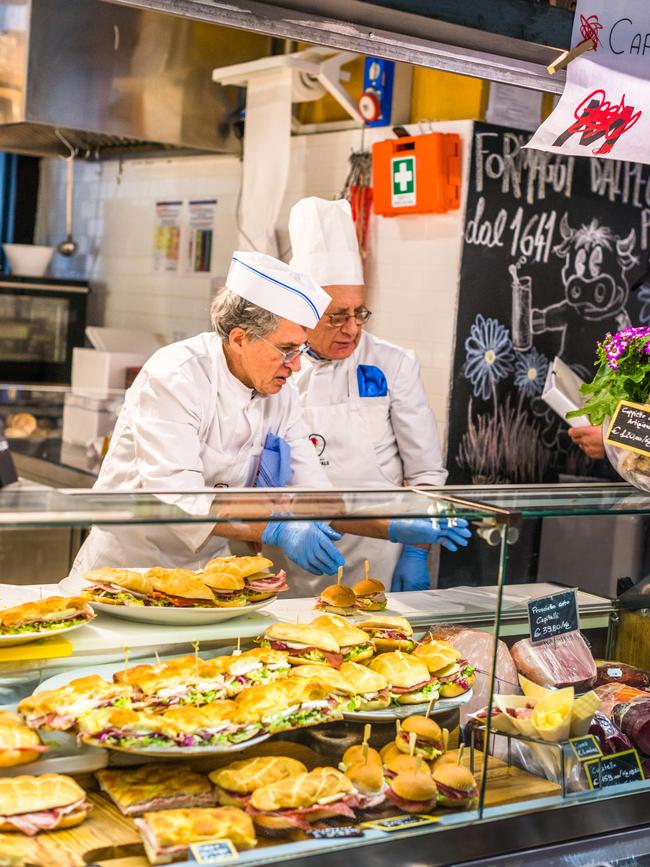
Il Mercato Centrale, Rome
British author Tim Parks wrote an entire book (Italian Ways) around Italy’s railway system and its place in Italian society and culture. He may never have made it any further south than Rome had Il Mercato Centrale, at Roma Termini, been finished before his to-the-end-of-every-line rail odyssey in 2012. Whether you’re travelling by train or picking up a rental car at the stazione, this funky food hall – one of four in Italy, with a Melbourne outpost due early next year – is a wonderful example of Italian food democracy. Generally speaking, they don’t do the “all under one roof” thing much in Italy. The Il Mercato idea gathers various vendors and artisans with space for sitting and relaxing – a food hall – but of such outstanding quality at prices most Australians will consider a bargain. You might have pizza al taglio by renowned pizzaiolo and baker Gabriele Bonci; smallgoods and meats by the Savigni family; trapizzini – a pizza-like stuffed pocket of deliciousness – by Stefano Callegari; cheeses, including fresh mozzarella, by Daniele Meini; a pasticceria, of course, from Federico Prodon; and on it goes. A coffee place, a gelateria, a wine bar; there’s a restaurant by chef Davide Scabin, fresh fish, a shop that only sells truffles, even a burgeria (my word) using only Chianina Tuscan beef. And it’s all done with a fresh sense of whimsy and fun, which makes it an essential destination in Rome for great food at fair prices.
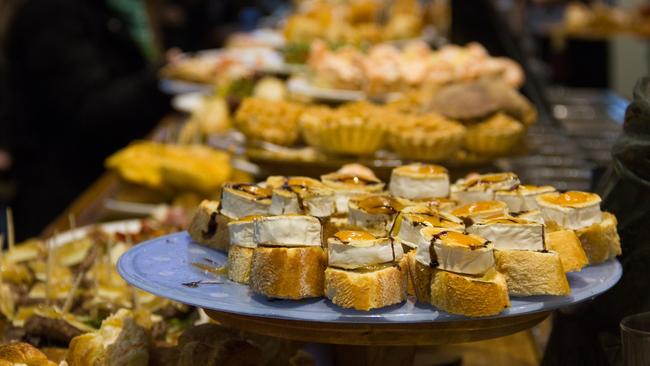
Parte vieja, San Sebastian
Everyone will tell you San Sebastian, the elegant seaside capital of Basque Spain (Donostia), is a food-lovers’ nirvana yet, and I say this from experience, it is entirely possible to leave town feeling just a little underwhelmed. Don’t risk it: head straight for the Basílica de Nuestra Señora del Coro, the baroque church in the parte vieja (old town) around 1pm and start wandering the surrounding streets, such as Calle 31 de Agosto, Calle Mayor or the Calle del Puerto. Even better, go at night. But go hungry, thirsty and open to spontaneity: cruising for tapas and pintxos is a San Sebastian obsession. A lot of these places somehow manage a sense of tradition with a modern feel, and Casa Vergara 1948, a so-called “bakailao ezpezialitatea” (baccala specialist) is a fine example, although by no means the only place you should consider. Others highly recommended include La Perla and Casa Gandarias, where the specialities are artichokes in olive oil and pine nuts, local wild mushroom runny omelets and a tapa of fried quail egg on morcilla on baguette. Guzzle txakoli, the splendid, low-alcohol frizzante Basque white wine and move to La Vina for its famed cheesecake. This small, particularly beautiful quarter of the city provides the perfect, proverbial moveable feast. For me it was a case of second time lucky. A very, very happy place.
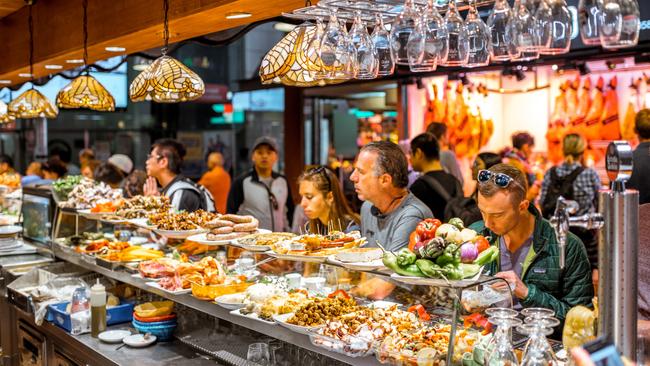
La Boqueria, Barcelona
For me, Barcelona’s main market is a little like Gaudi’s La Sagrada Familia: just because it’s crawling with tourists only makes it slightly less remarkable. You’ve still got to do it. And if food in its many splendoured forms gets you hot under the collar, there’s nothing I can say to dispute La Boqueria’s own, rather immodest claim to being “the best market in the world”. It’s a place to get lost. To revel in specialist vendors (who, other than your avowed vegetarian, does not get excited by the sight and smell of La Boqueria’s magnificent jamon shops?). To marvel in the diversity of, say, raw milk cheeses. Or olive oils. To gaze for hours at fish and crustacea, molluscs and other sea-borne edible flotsam and jetsam we will never see in Australia. To do an eeny-meeny-miny-moe and choose one of the many magnificent lunch bars – small kitchens with a row of in-demand bar stools – and eat your first plate of razor clams with a glass of vermut. To soak up the history, the sounds and the smells. Barcelona is a great city for eating and drinking, and while La Boqueria may have become something of a touristic cliché, it is still a place I’d rush back to in a heartbeat to take the pulse of the city and the season. If you must avoid fellow tourists, have a look at Mercat del Ninot in Carrer de Mallorca. No frills, very real and with a specialty salt cod shop – Bacallaneria Perelló – that’s second to none.
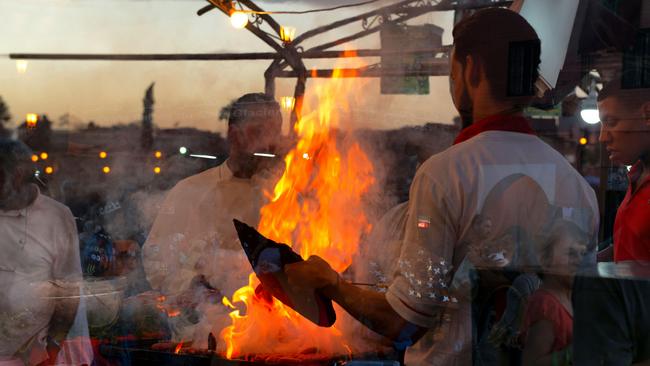
Morocco
It’s difficult to say which of my two strongest recollections of Morocco is the more powerful: the bewildering labyrinth of the Fes medina by day or the colourful, cacophonous chaos of Jemaa el-Fna Square in the old quarter of Marrakech by night. Both cities should be on the bucket list of any curious traveller, and because the medinas in both are essentially giant, meandering outdoor markets, food is everywhere. You cannot avoid bakers and prickly pear vendors, fruit and vegetable stalls and butchers selling camel meat and goat heads, spice vendors in all their colour, pickle and harissa shops, donkeys hauling sacks of rice, mopeds laden with eggs, and the shops specialising in every form of sugary, syrupy pastry… To visit Fes is to have your eyes on stalks for days on end. Marrakech is little different, although it has the night-time Disneyland that is the Square with its snake charmers and monkeys and conmen and touts and riotous noise. But if you want the real food of Morocco, this is where to find substantial outdoor eateries with tagines and sheep heads, snails and Allah knows what else. Restaurant culture is less developed than in Europe; eating at night is best done at your riad if for no other reason than the serious risk of getting lost. But most will do the standards well: pastilla, tagines, couscous, salads and the breakfasts with the unique half-pancake, half crumpet known as “crepes à mille trous” (crepe with a thousand holes).
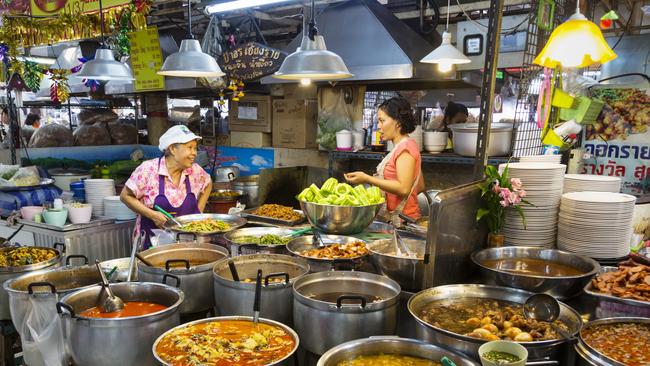
Or Tor Kor Market, Bangkok
Fruit, incense, rotting vegetables, charcoal, frying oil, engine emissions, humid heat… Bangkok has its own, unique smell and it’s distilled to an unforgettable essence in the many markets dotted across this huge city of more than 11 million people. It’s a cliché to describe the Thais as food-obsessed; if your food were as good as theirs, you might get a little fixated too. But the markets are where it all comes together – the shopping, the eating, the mutual recognition of an obsession with freshness – and Or Tor Kor is one of the best. Crammed with traders of all descriptions, it makes a straight line to the jugular of Thai food culture, a place where one of the most common expressions you’ll utter is “what the Dickens is that?” And the pidgin conversations to get to the bottom of a mysterious fish/animal/plant are half the fun. Then there’s the sheer diversity of produce: 15 types of eggplant, five different mounds of shrimp paste, a baker’s dozen of palm sugars, and on it goes. It’s a place that leaves you feeling alive, possibly wanting to cook your own lunch. Resist that urge: from massive pots a host of street food vendors serve some of the most authentic food you’ll encounter in Thailand, unbelievably delicious and, frankly, as cheap as chips. Curries, salads, fried or grilled dishes… Grab a table, order as much as you can eat, and pat yourself on the back for finding the real Bangkok.
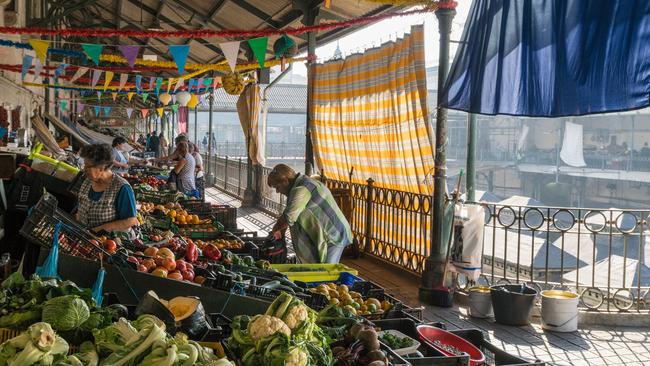
Old Porto, Portugal
Lisbon gets plenty of airtime, and deservedly so. It’s a fabulous city, chock-a-block with affordable, often excellent little bistros and even more affordable wine, all with a generally delightful, liberal vibe. Not to mention history and architecture. But elegant Old Porto, at the mouth of the Douro? More compact, more walkable yet with the same abundance of affordable little bistros where traditional Portuguese dishes are celebrated, not mucked around with. There’s a real sense of being happy with the old ways in Porto, not needing to bend to the will of 21st-century tourism. It feels like the real Portugal, and most places will offer famed standards such as tripas à moda do porto, which is something like a cassoulet with honeycomb tripe; tomato rice – part soup, part risotto – and bacalhau in myriad styles, such as bolinhos de bacalhau (fritters) and pasteis de bacalhau (salt cod fritters). Salt cod is everywhere. But Old Porto’s greatest charm is its historic cafes: they’re abundant, and all serve half-decent coffee and sensational pasteis de nata, Portugal’s justifiably famed custard tarts. The Majestic, a belle epoque marvel, is the most famous, and touristic, but others such as Café Guarany and Café Piolho provide a probably more accurate taste of the place and the city, with fewer iPhones. And any wine lover will need to cross the bridge over the Douro to check out some of the port houses. The food and terrace tables at Taylor’s are superb, as is the view.
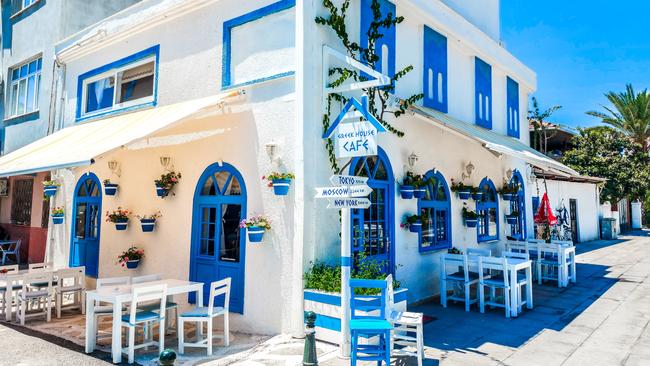
Turquoise Coast, Turkiye
Tomatoes, red capsicums, cucumbers and snowy white, crumbly sheep milk cheese: once you’ve been along Türkiye’s south-western coastline, you’ll never look at these ingredients in the same way again. Healthy eating is easy here. With a mostly unspoiled, rugged coastline, the Turquoise Coast of this big country offers a lot of produce from the sea as well as the land, which makes it an ideal location for eaters. And don’t the Turks love eating? This is a nation with solid culinary traditions and the zillions of tavernas in Fethiye, Kas and Demre offer outstanding eating out, at frankly wonderful prices. Places that quickly link you with the pillars of its food culture. Fethiye, in particular, is a beautiful port town with an incredibly vibrant cafe/bar/restaurant scene and a tremendous fish market where, by night, you choose your fish from one of many independent fish mongers; they will have it cooked for you with salads and condiments and beer and everything is, all of a sudden, magnificent. These people really know how to enjoy themselves around food. If extraordinary food is a deal-breaker on your travel planner, this part of Türkiye rewards all day, every day. So, so much more interesting than the nearby Greek island of Rhodes.
